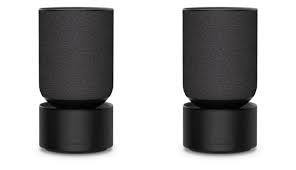Deck boards (Deski tarasowe) are a crucial component of any decking project, playing an important role in both aesthetics and functionality. If you’re planning to build a modern deck or replacing old boards, knowing the different alternatives available will help you make informed decisions that align with your needs and preferences.
Types of Deck Boards
The Wood Decking Boards are Classic and timeless, wood Deck boards (Deski tarasowe) come in several kinds. Pressure-treated lumber, such as redwood, can be a popular choice due to its cost and long-lasting. Redwood and cedar are favored for their natural resistance to insects and rot and also for their gorgeous appearance. But, wood decks need regular maintenance, which includes staining and sealing, to guard against weathering.
Composite decking boards Constructed from a blend of wood fibers and plastic composite deck boards give you the appearance of wood, but with a greater durability. They are impervious to fade and staining as well as scratching as well as they don’t require the same amount of maintenance as wood. Composite boards can be found in a wide range of styles and colors giving them the ability to be a flexible option to suit a variety of design tastes.
deck boards: PVC decking board. Polyvinyl Chloride (PVC) deck boards can be described as entirely synthetic, offering outstanding resistance to moisture, insects as well as UV rays. They are lightweight, easy to install, and require little maintenance. PVC boards are available in a variety of textures and colors, mimicking the look of natural wood.
aluminum deck boards: Although not as common the Aluminum deck boards are robust and resistant to severe weather conditions. They are fireproof and don’t require painting or staining. However, their costs may be higher than other materials.
Choosing the Right Deck Boards
When you are choosing deck boards, consider the following factors:
Durability: Consider how the material will stand against the elements, foot traffic and wear over time.
Maintenance: Determine the amount of work and time you’re prepared invest in upkeep. Wood boards require more maintenance than PVC or composite options.
Cost Budget is an important factor to consider. Although wood might be less expensive initially, long-term maintenance costs could be costly. PVC and composite PVC boards are more expensive in initial expense, but they are more economical in the long run.
Aesthetic: Choose a style and color that is a perfect match for your home and outdoor space. Composite and PVC provide many color and style options compared to wood.
Installation Tips
The correct installation is crucial to ensure the durability the deck. Be sure to follow the manufacturer’s recommendations for spacing and fastening, and consider using an expert installer if you’re unsure about the process.
In conclusion deck boards are many different materials, each offering different advantages and nuances. When you know your options and carefully assessing your requirements, you will be able to select the best deck boards to create a beautiful and long-lasting outdoor space.



